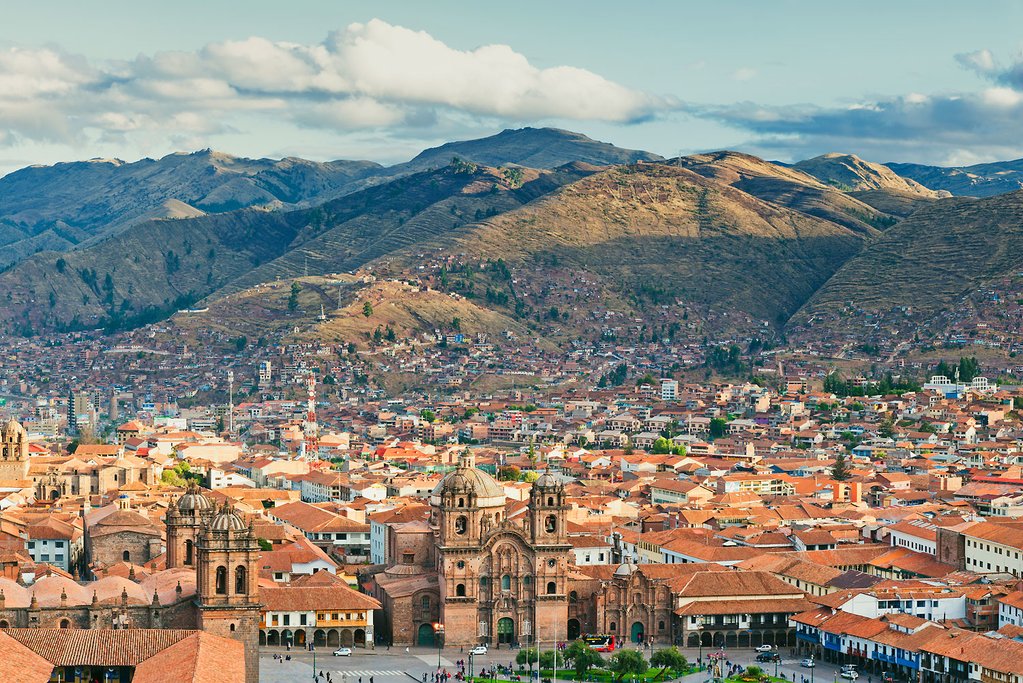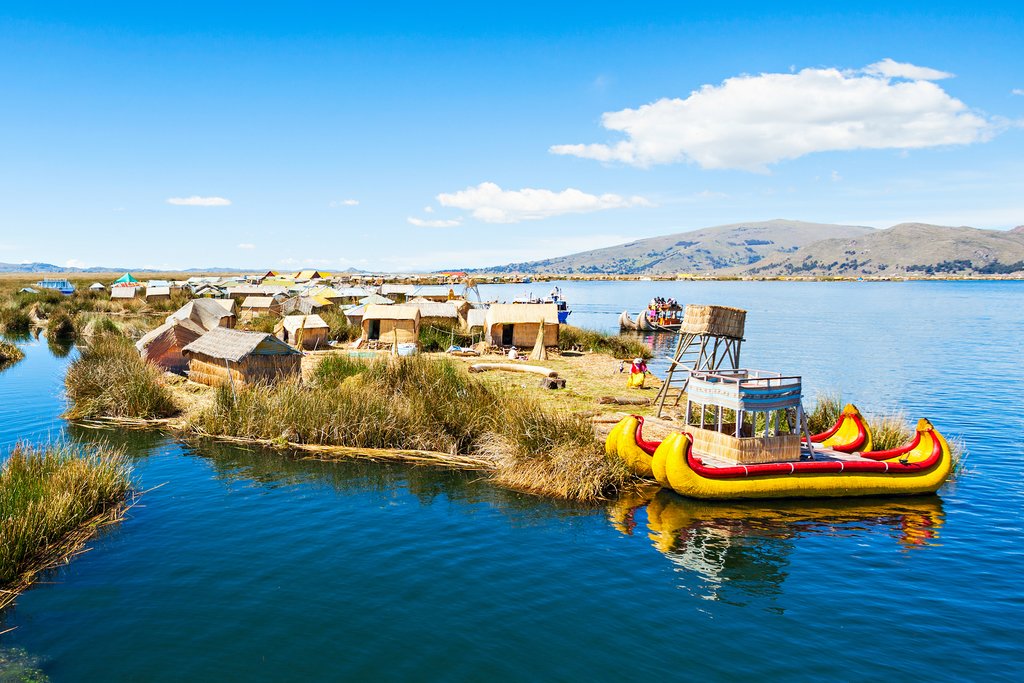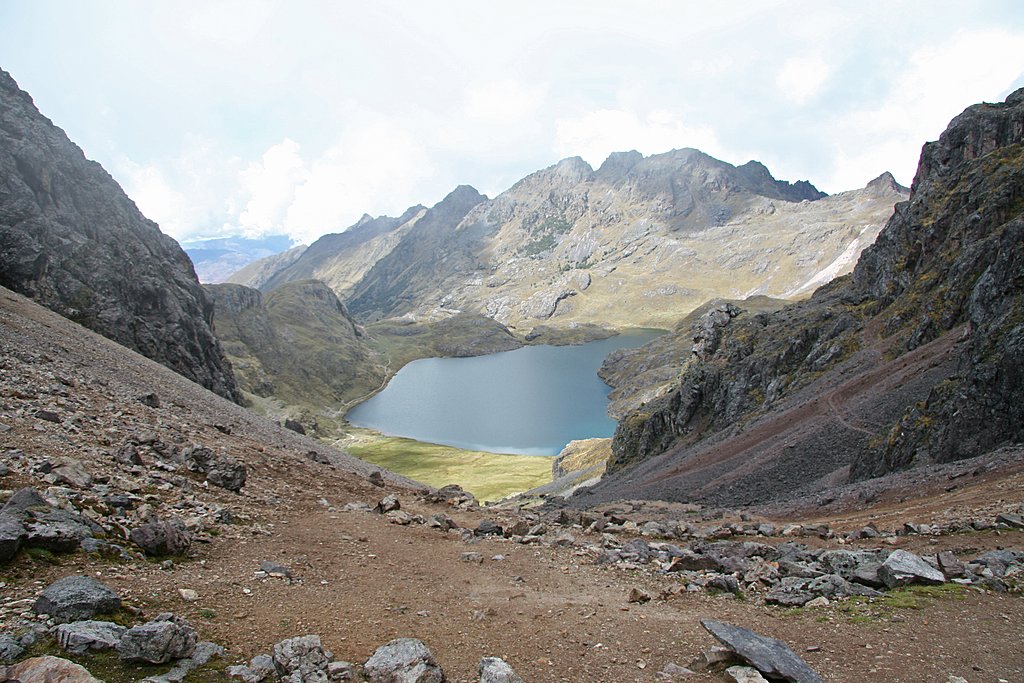Highlights
- Hike the Lares Trek & the 1-day Inca Trail
- Spend a day immersed in the history of Machu Picchu
- Explore the beauty of the Sacred Valley
- Trek the colorful Rainbow Mountain
- Delve into the culture and history of Lake Titicaca
Brief Itinerary
| Day | Highlights | Overnight |
|---|---|---|
| Day 1 | Arrival in Lima | Lima |
| Day 2 | Arrival in Cusco, Exploring the City | Cusco |
| Day 3 | Lares Trek: Huacawasi to Ipsaycocha Lagoon | Ipsayccasa Lagoon |
| Day 4 | Lares Trek: Ipsaycocha Lagoon - Patacancha - Pumamarka - Ollantaytambo | Ollantaytambo |
| Day 5 | Short Inca Trail to Machu Picchu: Ollantaytambo - Km 104 - Aguas Calientes | Aguas Calientes |
| Day 6 | Machu Picchu Excursion: Aguas Calientes - Machu Picchu - Ollantaytambo | Ollantaytambo |
| Day 7 | Maras & Moray Tour: Ollantaytambo - Urubamba | Urubamba |
| Day 8 | Sacred Valley Tour: Urubamba - Pisac - Chinchero - Cusco | Cusco |
| Day 9 | Rainbow Mountain (Mount Vinicunca) Hike | Cusco |
| Day 10 | Arriving in Puno: Cusco - Puno | Puno |
| Day 11 | Lake Titicaca Tour: Uros Floating Islands & Taquile Island | Puno |
| Day 12 | Departing Puno |
Detailed Itinerary
Day 1: Arrival in Lima

¡Bienvenidos! Welcome to Lima, Peru's largest city and central metropolitan hub, and home to one-third of the country's population. Located at the site of a pre-Columbian indigenous Ychsma settlement, which was conquered by the Inca empire in the 15th century and later by the Spanish conquistadores, Lima has a fascinating history and a diverse mix of cultures. Amerindian, European, Afro-Peruvian, and Asian—especially Chinese and Japanese—influences make Lima a dynamic and exciting city to explore.
Lima's breezy location on the Pacific Ocean and mild desert climate make it the perfect city for exploring on foot. Head downtown to mingle with locals, stretch your legs, and grab a bite to eat in one of the many award-winning restaurants.
Suggested activities include:
- Explore the historic center of Lima, a UNESCO World Heritage Site packed with fascinating Spanish architecture. Start with a scenic tour of the colonial downtown, which emanates from the main square. Stroll over to the 16th-century Cathedral, which took 80 years to construct and was built in the grandiose style of the Spanish Empire.
- Visit the Casa Aliaga, a colonial mansion granted by chief conquistador Francisco Pizarro to Jerónimo de Aliaga, one of his captains, in 1535. This is the only house from that era that still belongs to the same family.
- Stroll around the Pueblo Libre district to the privately owned Larco Museum of pre-Columbian art, housed in a beautifully restored viceregal mansion built over a 7th-century pre-Columbian pyramid. The museum boasts a vast pre-Colonial collection of gold and silver artifacts, as well as pieces of erotic art.
- In the evening, head to the eclectic "Love Park" in the upscale coastal district of Miraflores, where you can admire a huge kissing statue and beautiful mosaic walls. The park is built on the cliffs of Chorrillos and is a perfect place to enjoy a spectacular sunset over the Pacific.
- Enjoy a nightcap at an open-air cafe or restaurant in the diverse Miraflores neighborhood.
Day 2: Arrival in Cusco, Exploring the City

Head to the Lima airport for your transfer flight to Cusco. This ancient city is the former capital of the Inca empire, which reigned from the 13th to 16th centuries after conquering the Killke settlement on the same location.
Remember: you will be 11,000 feet (3,000 m) above sea level, so take it easy and remember to drink lots of water. Since Cusco was designed by the Incas as a city for walking, start your exploration of the narrow stone alleyways on foot. Take a walk through the plaza — if the weather is beautiful, it's a perfect place to sit on a balcony and have a cup of coca tea while adjusting to the elevation.
Suggested activities include:
- Visit the Coricancha, also known as "The Temple of the Sun." The temple was built by the Incan Emperor Pachacutec (1438 - 1572), and after the arrival of the Spaniards became the basis for the construction of the Santo Domingo Convent.
- See the Cathedral, the most imposing monument in the central Plaza de Armas and a repository for Cusco's colonial art. Its construction lasted for almost 100 years, beginning in 1560 and ending in 1654.
- Walk to Sacsayhuamán and next-door Quenqo, both archaeological complexes used mostly for religious and agricultural rituals, located 2.5 miles (4 km) from the city of Cusco. Built by the Killke people, Sacsayhuamán is a marvel of ancient architecture, a monolithic fortress built from giant blocks of stone, the origins and assembly of which remain a mystery.
- Discover the elaborate Puca Pucara ruins—an architectural complex of alleged military use with multiple plazas, baths, aqueducts, walls, and towers. It is believed that the entourage of the Incan emperor used it while he stayed at Tambomachay, the elaborate estate and baths nearby.
- Explore San Blas, an old bohemian quarter famous for its picturesque white walls, blue doors, and creative artisan community.
- Experience the legendary Mercado Central de San Pedro, a large and diverse market famous for its mouth-watering fruit juices, home-style meals, medicinal herb stalls, and rows of various meats, breads, vegetables, and other necessities.
- Eat lunch at a local Peruvian restaurant and sample local flavors and cooking techniques—crackling pork, pickled vegetables, seasonal flavors, bread baked in earthen ovens, roasted vegetables, and sweet donuts make for a delicious and filling meal.
Day 3: Lares Trek Day 1/2: Huacawasi to Ipsaycocha Lagoon

You will be picked up very early from your hotel in Cusco to head to Huacawasi (Lares). Here, you'll learn about the local custom and traditions, many of which have remained unchanged since pre-Incan times. After this you will begin the trek, gradually ascending and passing by small populations that still use the very colorful clothing of their ancestors, as well as their herds of llamas and alpacas.
After ascending for approximately 3-4 hours, you will arrive at the highest point of the trek- Ipsayccasa (4,450 m). Here you will rest and take in the view of the snow-capped mountains, including the towering Nevado Verónica (5,750 m). After you are rested, you will descend to the Ipsaycocha Lagoon (4,350 m), a small lake with an abundance of high-altitude birds, including the Andean goose, the Puna ibis, and other aquatic birds that soar through the mountains. You will camp here, close to the lagoon of Ipsaycocha.
Accommodation: Camping
Day 4: Lares Trek Day 2/2: Ipsaycocha Lagoon - Patacancha - Pumamarka - Ollantaytambo

Enjoy an early breakfast surrounded by the mountains and the lagoon in all their splendor. Today, you'll start your trek with a descent toward the community of Patacancha (3,750 m), which is an ancestral community characterized by its woven textiles and rich culture. From here you will take a local vehicle for approximately 30 minutes to the archaeological site of Pumamarka (3,750 m), known locally as “The Pueblo del los Pumas” (The City of the Pumas), a mystical and magical place overlooking the Sacred Valley of the Incas.
After your visit to Pumamarka, you will have a delicious lunch and a nice rest. After lunch, you will start hiking again on one of the original Inca Trails. On this trail, you'll be treated to a number of archaeological sites, incredible landscapes, and impressive views. Your journey will end in the village of Ollantaytambo, where you'll check in to a local hotel and get some well-deserved rest.
Chat with a local specialist who can help organize your trip.
Day 5: Short Inca Trail to Machu Picchu: Ollantaytambo - Km 104 - Aguas Calientes

Early in the morning, we will take the train from Ollantaytambo to Km 104 where the short Inca Trail starts. By train, we see how the valley turns into a canyon and the scenery begins to alter as the cloud forests appear on our approach to Machu Picchu. We will disembark the train at Km 104 and start the hike along a challenging uphill path.
Start the trek to your first archeological site—Chachabamba. This beautiful site is very well preserved thanks to its location in the valley and was likely used for religious purposes and as a gatekeeping point for this entrance to Machu Picchu.
From here ascend for 3 hours to the ruins of Wiñay Wayna (2732 m / 8964 ft), an ancient rest area for travelers on the Inca trail. Here, we'll stop to enjoy our delicious boxed lunch, with superb views of the massive green mountains and native orchids.
The trail then becomes gentler and continues through the semi-tropical cloud forest to Intipunku (Sun Gate) where you'll enjoy your first panoramic views of Machu Picchu. Descend half an hour to the citadel for a short break and an opportunity for photos.
We won't be exploring the ruins today, as it will be getting dark. After passing through the Sun Gate, we'll cross the site to take the bus down to Aguas Calientes, where you'll check into our hotel to rest and relax in anticipation of a full-day visit to Machu Picchu tomorrow.
Maximum Altitude: 2732 m / 8964 ft
Minimum Altitude: 2088 m / 6850 ft
Distance Travelled: 10.79 km / 6.67 ml (to Inti Punku)
Approximate Walking Time: 7 hours
Day 6: Machu Picchu Excursion: Aguas Calientes - Machu Picchu - Ollantaytambo

Get an early start to beat the crowds and get the best views of the ancient ruins. From Aguas Calientes, it's an easy 25-minute bus ride up to the Machu Picchu ruins.
This 15th-century Inca citadel is located at 7,970ft (2,430 m) and is a masterpiece of engineering that served as a sanctuary and retreat for the Incan Emperor Pachacutec and his royal court. Machu Picchu, which means "Old Mountain," is considered a World Heritage Site by UNESCO and is one of the new Seven Wonders of the World.
Built as a seasonal residence for the Inca family, Machu Picchu was rarely home to more than 800 people, and during the royals' absence, a mere 100 servants would remain at the site to maintain the grounds. Machu Picchu was abandoned 100 years after construction due to the Spanish conquest and remained largely hidden to the outside world until the early 20th century.
Your guide will lead you around the site and explain the different buildings and curious corners of the building complex. Approximately one-third of the site has been reconstructed into its original structure, giving visitors a sense for the grandeur and artistry of the original citadel.
After the tour, take the bus back to Aguas Calientes for lunch and then board the train to Ollantaytambo. Upon arrival in Ollantaytambo, transfer to your hotel and enjoy a relaxing evening in the Sacred Valley.
Day 7: Maras & Moray Tour: Ollantaytambo - Urubamba

This morning, you'll depart from your hotel in Ollantaytambo for your journey to Moray. Along the way, you'll enjoy views of the Andes' snow-capped peaks, lush yellow fields of wheat, and small villages. Upon arrival in Moray, you'll see the three famous amphitheater-like terraces made by the Incas. These terraces are carved deep into the earth in the shape of a bowl. It is believed that the Incas once used these terraces as agricultural laboratories to determine the optimal conditions for growing crops.
When you are done exploring Moray, you will head about two miles away, to the salt mines of Maras. This village is known as a former salt-producing center and is thought to date back to pre-Incan times. There are over 3,000 salt pools carved into the mountainside, that are filled daily by a stream of water. This spectacular area is perfect for you if you wish to see something different than the ruins.
After exploring Maras, you'll travel to Urubamba and check in to your hotel.
Day 8: Sacred Valley Tour: Urubamba - Pisac - Chinchero - Cusco

You will be picked up from your hotel in Urubamba to begin your second day adventure in the Sacred Valley.
First, you will head to one of the most important archaeological sites in the region, Pisac, to see Inca burial grounds, ancient irrigation systems and religious centers. Upon arriving in Pisac, visit its ruins and terraces, then head down the valley to the visit the town. Here, you'll walk through the cobblestoned streets to the plaza to see locals selling produce and souvenirs in their stands. You will have some free time to browse and do some shopping.
After exploring Pisac, travel to the Awanakancha Llama Sanctuary where you will see llamas, alpacas and a weaving demonstration. After, you will head to Chinchero, the small rustic Andean town where you will get to explore the ruins before making your way back to Cusco.
Day 9: Rainbow Mountain (Mount Vinicunca) Hike

Today will begin with an early pick-up from your hotel in Cusco for the 3.5-hour drive to the start of the trek.
When we reach the trailhead, we'll enjoy some breakfast before starting the hike. After breakfast, we will begin the hike from Chillca, at 3,700 m/12,139 ft elevation. From here, it will be a 4-hour, uphill hike to reach the famous Rainbow Mountain.
Along the way, you will enjoy amazing views of the Andes, glacial peaks, red mountains, rocky hills, along with llamas and alpacas grazing along the valley. Once you arrive at the top of Rainbow Mountain, you will have enough time to absorb the majesty of the red mountains that surround this area. You will also see amazing views of the valleys and Ausangate Glacier Peak in front of you. Ausangate is the tallest mountain of the Cusco region (just under 21,000 ft elevation) and is part of the Cordillera Vilcanota Range.
After taking in the view, we'll descend back to our car and driver for the drive back to our hotel in Cusco.
Day 10: Arriving in Puno: Cusco - Puno

Transfer to the Cusco airport to catch your flight to Juliaca and transfer to the city of Puno, located on the shores of Lake Titicaca. Lake Titicaca is the largest lake in South America. Although many bodies of water exist at higher elevations, Lake Titicaca's surface elevation of 12,507 ft (3,812 m) makes it the highest lake in the world that is navigatable by large commercial vessels.
Lake Titicaca is a hotbed of ecological diversity, archaeological ruins, tourism, and modern-day farming communities. The coastline outside of Puro is home to the Uros people, who live on floating reed islands made from the totora plant, a thick buoyant reed. Totora is used to make everything from homes and boats to the islands nearly half the size of a football field. The Uros people offer guided tours to their homes and sell traditional handicrafts to supplement their traditional hunting and fishing economy.
Several other ethnic groups, most notably the Quechua and Taquileños, inhabit several of the other larger islands on the lake, the majority of which have no electricity or paved roads. Visitors are welcome to select homes on this island for homestays.
Photographers and naturalists will enjoy seeing some of the many hundreds of aquatic and bird species, many of which are found nowhere else on earth.
It's a good idea to take it easy on your first day and acclimatize the elevation. Drink lots of water and make sure to rest. After arrival, check out some of the town's restaurants and cafes for a fresh and local dining experience.
Day 11: Lake Titicaca Tour: Uros Floating Islands & Taquile Island

Be sure to fuel up at breakfast this morning, as this full-day experience will last around 9 hours.
Your first stop will be to one of the floating Uros islands. It is believed that the Uros were one of the first ethnic groups to populate the Andean region. The Uros people live on man-made floating islands on Lake Titicaca. These islands are constructed out of the totora reeds that grow in abundance around the lake. During your visit to these islands, you'll learn about the everyday life and traditions of the Uros people.
After your visit to the floating island, you'll head to lunch at a local restaurant on Taquile Island*. Quinoa soup, fresh fish caught in the lake, and vegetables are a typical lunchtime meal in Taquile. After lunch, we'll explore Taquile Island. This island remained mostly isolated from the outside world until the 1950s. As a result, the Taquileños follow a very different way of life. On the island, decisions are made communally, there are no cars, and there is very little electricity - just the way the Taquileños like it. Taquile is also famous for the exquisite weavings the locals produce. Traditionally, the men spin the thread, and the women design and weave each piece. You'll have the opportunity to learn about the lives and traditions of the Taquileños, and appreciate the stunning views of Lake Titicaca from the island's shores.
In the evening, walk back to the main dock in Taquile and board a boat back to Puno. Upon arrival in Puno, transfer to your hotel for the evening.
*Note: Visiting Taquile requires a strenuous climb up 500 steps to the main part of the island. Elevation ranges from around 12,000 ft at the lakeshore up to 13,000+ ft at the highest point.
Day 12: Departing Puno

Today is your last day in Peru! You will be met at your hotel for a transfer to Juliaca Airport, where you will transfer to your departure flight. ¡Buen viaje!


